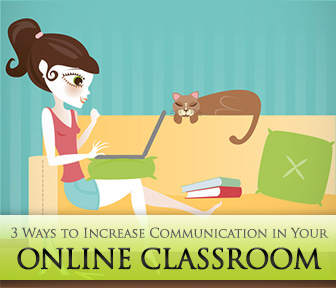Plug In: 3 Ways to Increase Communication in Your Online Classroom


One of the sizable difficulties can be relating to students and determining their needs. Try these three techniques to create rapport that will build lasting relationships within your online classroom.

There are many forums that can help you facilitate communication amongst students in an online classroom. One of the best choices for teachers just starting out with online content is Yahoo Groups. It is an outstanding choice because students from most countries can access it, and it is simple for the instructor to create and maintain. It only takes about 15 minutes to set up from scratch and it can utilized as a class page or as a place to do supplemental work.
There is no limit to how you can use a Yahoo Group for your class. It can be used like a bulletin board where instructors and students can write and reply to messages. You can post assignments, manage a class calendar, share photos and create photo albums, create member polls and share information and links. You may want to require students to have a certain number of visits or posts per week. They can start conversations or ask questions on topics relevant to the class, and which engage their varied interests. You can also facilitate it in a way that you are managing class outcomes while putting the students in the driver's seat to generate content. The teacher can pose a question and students can drive the direction the discussion takes. You can also join in conversations that students have started so that they get to know your style and views on things. You may also wish to share links for independent study and other resources that will help students be successful. It is important to use the group to get to know your students and to find out what motivates and excites them.
One benefit to creating rapport via a Yahoo group is that students will hone more skills in reading and writing. This type of forum combined with Skype or some other form of video and audio communication ensures that they are getting the necessary practice in all language skills. It also allows them to take their time with what they are posting and get back necessary correction and input from the instructor.
Setting a positive tone from the beginning of an online class will serve you well, and lead to wonderful communication as the class progresses. In order to set the tone that optimizes student performance there a few things to focus on. First you want to be sure you are welcoming and personable while communicating in a very clear voice with animated facial expressions. Students in an online environment need to see and hear very clearly your instructions, your corrections, as well as your style. It's also crucial that students get to know one another well while having you moderate those relationships. Provide every student an opportunity to shine, share experiences, and give their input. Be sure to include all students equally and engage them in activities that will facilitate sharing personal details, goals and experiences.
Another important element is to set clear expectations with your students, and provide explicit guidelines as to how the class will operate, what topics will be covered, and how much work will be required. Students also need to know when you will be available and how they can contact you with questions or concerns. Because you don't have a physical presence, it is imperative to be that much more congenial with them during your online class sessions.
Just because you are utilizing technology to host your class doesn't mean every aspect of the lesson has to be high-tech. Adapt activities from the traditional classroom to ensure that students still receive the same structure and practice they would in a traditional classroom. An example of this would be to still incorporate rounds or triangles where students ask one another questions in an organized order. In-class activities don't have to be replaced simply because you are communicating over an internet connection. For example, you can still incorporate traditional grammar explanations, being sure to provide everyone with the same handout so that they can easily access and refer to. Students can also still do project work where they do some level of independent preparation with your guidance and then give a presentation to the class. These are all examples of how to maintain engagement in a low-tech way. So don't always rely on technology to create interesting lessons. Bring in your personality, expertise and incorporate all kinds of activities!
It's not all that different from teaching in a traditional classroom, and making minor adjustments to your teaching style can lead to powerful results. Don't forget to create lasting relationships with students to make the most of your online environment.